Both SHODO calligraphy brushes and SUMIE/ SUIBOKU painting brushes share the common feature of having animal hair bristles attached to a shaft, but there are three significant differences in their manufacturing and usage:
- SHODO Calligraphy brushes are primarily designed for the purpose of writing Kanji /Hiragana, and they are categorized based on their size, such as large, medium, and small brushes. On the other hand, painting brushes are diversified into various types based on their specific uses, including applying paint (刷毛 hake), outlining (線描 Senbyou), drawing objects without outlining (附立 Tsuketate), coloring (彩色 Saishiki), detailed coloring (面相 Menso), and blurring (熊取 Kumatori), among others. When using each brush, the experiences and sumi ink absorption become apparent, providing a better understanding of their intended purposes.
- Painting brushes are used by submerging the entire bristle head (soaking in sumi ink), while calligraphy brushes may have brushes designed to use only the tip of the bristle.
- Direct brushstroke (直筆 Chokuhitsu) vs. Side brushstroke (側筆 Sokuhitsu): Direct brushstroke refers to writing with the brush held vertically, while side brushstroke involves writing/draring with the brush held rather horizontally. When writing characters with a brush, the basic technique is to use a direct brushstroke, where the belly of the brush is not utilized. On the other hand, in arts like sumi-e, where both lines and surfaces are depicted, side brushstroke, utilizing the belly of the brush, is commonly employed.
For beginners, choosing a brush that aligns with their purpose is crucial for a comfortable writing experience. As you become more experienced, you may feel inclined to try brushes that suit your preferred expressions. Understanding the characteristics of each brush will undoubtedly broaden the range of artistic expression. Feel free to experiment with various brushes and discover the ones that resonate with your style.






